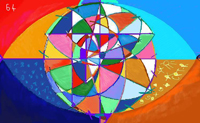Speaker
Franco Cervelli
(PI)
Description
The Mu2e Experiment is now being developed at Fermilab, with the goal to
improve on the existing limit for the neutrinoless conversion of a muon to
an electron in the field of a nucleus by four orders of magnitude.
This reaction is an example of Charged Lepton Flavor Violation (CLFV). CLFV has
never been observed in any reaction of any kind. The existence of neutrino
oscillations leads to a Standard Model prediction of the rate for
mu to e which is far smaller than current or forseeable experimental limits,
and consequently the observation of mu to e conversion would be a clean
indication of new physics.
Most models of new physics predict a signal just beyond current limits,
therefore a four order of magnitude improvement in the measurement will
either see a signal or place dramatic limits on the flavor conservation
requirements of any theory beyond the SM.
We will describe some of the theory motivation, then the experiment itself.
A pulsed negative muon beam is stopped in a thin aluminum target. Each stopped
muon forms a muonic atom, placing the muon in close proximity to the aluminum
nucleus. The goal is to measure the ratio of the rate of mu-e conversion
to the rate of ordinary muon capture with a single event sesnitivity of 2e-17.
The development of the necessary high-acceptance muon source, methods
of detection of the monoenergetic conversion electron, and background
suppression will be described.
Author
Prof.
James Miller
(Boston University)

